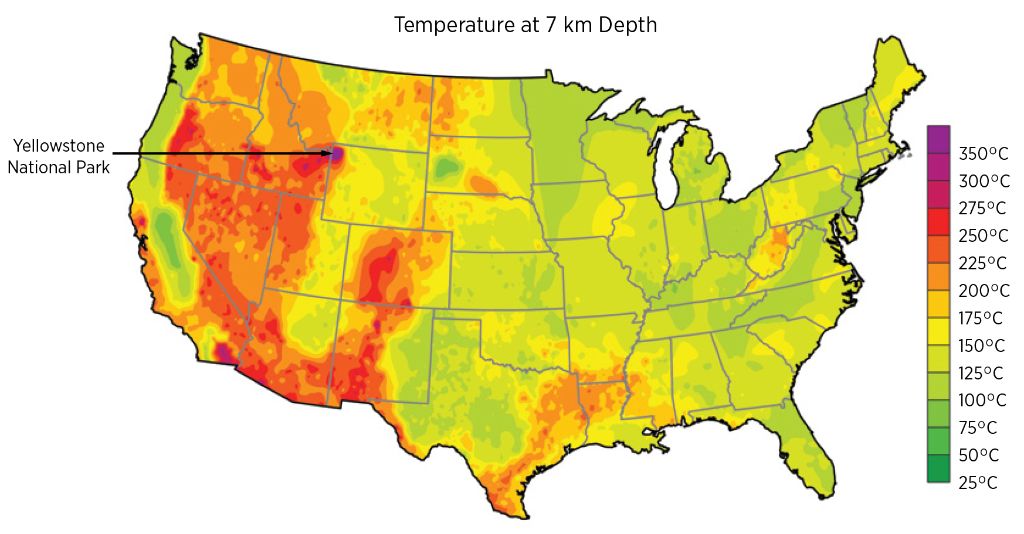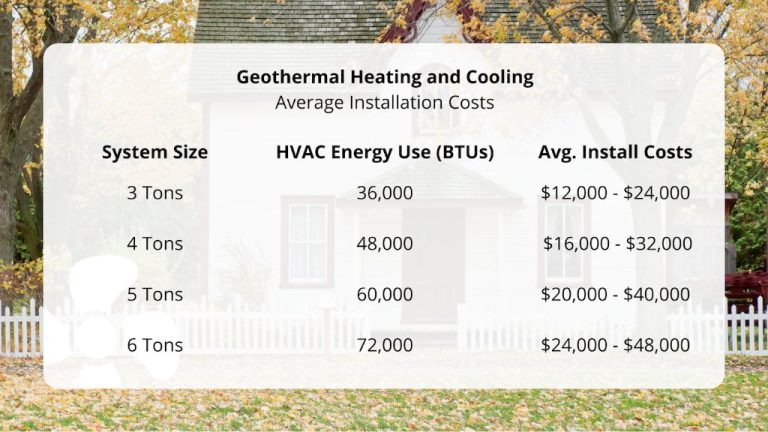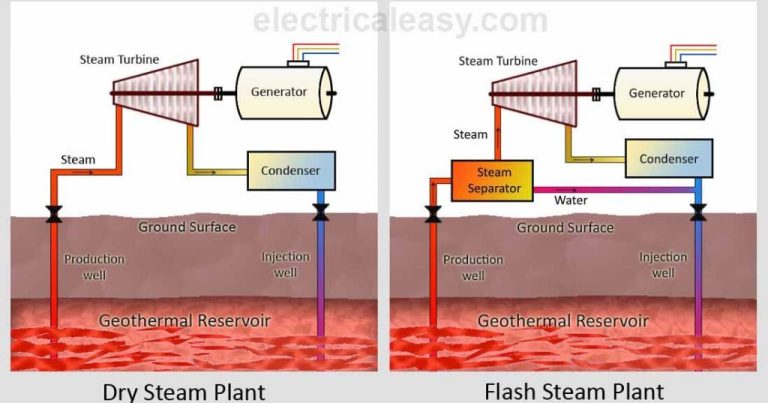Could The Us Use Geothermal Energy?

Geothermal energy harnesses the natural heat within the Earth to generate renewable power. It has significant potential in the United States, which possesses enormous geothermal resources due to its unique geological features like active volcanoes and geysers. With the right technologies and policies, geothermal power could play a major role in America’s energy mix. This article will examine the feasibility of greatly expanding geothermal energy usage across the US.
What is Geothermal Energy?
Geothermal energy is heat derived from the Earth (https://www.eia.gov/energyexplained/geothermal/). The word “geothermal” comes from the Greek words geo (earth) and therme (heat). Geothermal energy taps into the heat found underground to generate clean and renewable electricity or provide direct heating.
The Earth’s core is extremely hot, between 3,000 and 7,000 degrees Celsius. As you move towards the Earth’s surface, temperatures get cooler but rocks and water can still be extremely hot – sometimes exceeding 400 degrees Celsius. Depending on the location, this heat can be harnessed for energy. Wells can be drilled into underground reservoirs to pump hot water or steam to the surface. The steam can then drive turbines to generate electricity. Or in some cases, the hot water itself can be used directly for heating homes and buildings.
US Geothermal Resources
The United States has significant geothermal resources spread across the western states, Alaska, and Hawaii. According to the National Renewable Energy Laboratory (NREL), there are over 9,000 MW of identified hydrothermal resources suitable for electricity generation and over 100,000 MW of undiscovered hydrothermal resources. Additionally, over 100,000 MW of geothermal resources are available for direct heating applications.
High temperature geothermal resources (>150°C) capable of electricity generation are concentrated in the western states along the Pacific Coast, the Rocky Mountains, Alaska, and Hawaii. Major known geothermal reservoirs exist in California, Nevada, Utah, Idaho, Oregon, and Wyoming. Lower temperature geothermal resources (50-150°C) suitable for direct heating purposes are more widely available across the western states and in some locations on the east coast according to geological surveys.
Alaska and Hawaii also have substantial identified and undiscovered geothermal resources due to their volcanic geology. In total, the western states are estimated to have over 517,800 MW of electric power generation potential from identified and undiscovered hydrothermal sites according to the US Geological Survey.
Electricity Generation Potential
The United States has significant potential for growth in geothermal electricity generation. According to the U.S. Department of Energy, the estimated geothermal power resource potential for the United States is approximately 530 gigawatts (GW) [1]. In 2022, the installed geothermal electricity generation capacity was just over 3.8 GW [2], meaning only a fraction of the potential has been tapped so far.
The Department of Energy report projects that with supportive policies, U.S. geothermal power capacity could increase to over 100 GW by 2050. This is more than a 26-fold increase over current capacity, showing the large growth potential. Several states such as California, Nevada, and Utah hold particularly promising geothermal resources that could allow for major capacity expansions. With continued technology improvements and drilling advancements, even more of the geothermal resource potential could become economically viable for electricity generation in the coming decades.
Direct Heating Potential
Geothermal energy can be used to directly heat buildings and homes through a process called direct-use heating. This involves tapping into underground reservoirs of hot water and using heat exchangers to transfer the heat into buildings. According to the National Renewable Energy Laboratory (NREL), direct-use heating is one of the most common uses of geothermal energy in the United States, with over 600 projects currently installed across the western states.
Some examples of direct geothermal heating projects in the US include:
- Boise, Idaho – Over 185 buildings in downtown Boise, including the state capitol building, are heated using geothermal hot water from a reservoir 920 meters below the city.
- Klamath Falls, Oregon – Many public buildings, businesses, and homes in this city utilize geothermal heating from shallow wells, saving over $7 million annually in heating costs.
- San Bernardino, California – The San Bernardino International Airport terminal utilizes geothermal heat, estimated to save $300,000 per year in energy costs.
According to the International Energy Agency, the potential for geothermal direct heating in the United States could reach up to 231 gigawatts (GW) by 2050. Tapping into this vast clean energy resource can help reduce fossil fuel consumption for heating while saving money for homeowners and businesses situated above geothermal reservoirs.
Economic Benefits
Expanding geothermal energy in the US could create significant economic opportunities in terms of jobs and revenue. According to a report by Energy and Environmental Economics, Inc (E3), developing geothermal resources in California alone could support up to 18,900 jobs and provide up to $1.1 billion in revenue for local economies by 2050. The geothermal industry creates jobs in construction, manufacturing, operations and maintenance. High-paying jobs are generated directly at geothermal plants and indirectly in supporting industries. Compared to fossil fuels, geothermal energy offers more jobs per megawatt and per dollar invested. The geothermal industry also provides revenue to federal, state and local governments through taxes, royalties and lease payments.
Environmental Benefits
Geothermal power plants have substantially lower emissions compared to conventional fossil fuel power plants. According to the Energy Information Administration, geothermal plants release only 1-3% of the carbon dioxide emissions of a fossil fuel plant. They also release far lower amounts of sulfur dioxide and nitrous oxides. The direct use of geothermal energy for heating also eliminates on-site emissions.
Geothermal plants require less land than fossil fuel plants or solar and wind farms. They use about 1/8th the land area per kWh compared to a coal-fired plant, and 1/25th the land area of solar photovoltaics, according to the Department of Energy. This compact footprint results in less overall disturbance and impact on ecosystems.
With low emissions and land use, geothermal energy provides a clean, renewable alternative to fossil fuels for power generation and heating.
Challenges
While geothermal energy has many benefits, it also comes with some challenges that have limited wider adoption in the US. Two key challenges are the high upfront costs and finding ideal locations.
Constructing geothermal power plants requires significant upfront investments, with costs ranging from $2500 to $5000 per installed kilowatt of capacity (https://www.energy.gov/eere/geothermal/geothermal-faqs). The drilling and resource exploration required before plants can be built also contributes to the high costs. These upfront costs can make geothermal energy less financially viable than cheaper alternatives like natural gas power plants.
Geothermal energy is also heavily dependent on location, as it requires heat sources and underground reservoirs. Ideal locations have a combination of geologic features like active seismic zones and shallow magma pockets. However, most high-temperature geothermal resources in the US are located in the western states like California and Nevada (https://www.rff.org/publications/explainers/geothermal-energy-101/). Transmitting the electricity from these regions to population centers further increases costs and losses. The geographical constraints limit the widespread deployment of geothermal across the US.
While research into advanced technologies like enhanced geothermal systems could help unlock a greater geothermal resource potential, the location dependence and upfront costs remain key obstacles for broad adoption of geothermal energy in the US.
Policies
The United States government has implemented several policies aimed at promoting the development of geothermal energy. Key federal policies include:
The Geothermal Steam Act of 1970, which opened public lands for geothermal leasing and established a competitive bidding process for geothermal leases on federal lands (Source). This helped jumpstart geothermal development in the U.S. by providing access to geothermal resources.
The Energy Policy Act of 2005, which created loan guarantees, tax incentives, demonstration projects, and other programs to boost geothermal energy (Source). This expanded support for geothermal power and direct use applications.
The Geothermal Exploration and Technology Program at the Department of Energy, which funds research on enhanced geothermal systems and other advanced technologies to make geothermal more cost-competitive (Source). This aims to address technical barriers facing geothermal.
Federal policies have sought to make geothermal energy economical by providing access to geothermal resources, financial incentives, and funding for technology R&D. However, some argue more supportive policies are needed for geothermal to compete with fossil fuels and grow to its full potential in the U.S.
Conclusion
Geothermal energy has significant potential to expand and provide clean, renewable energy in the United States. The western half of the country in particular has abundant geothermal resources that could generate gigawatts of electricity and provide direct heating to homes and businesses. Developing just a small fraction of the available geothermal resources could power millions of American homes with reliable baseload electricity. The environmental benefits are clear as well – greatly reduced greenhouse gas emissions compared to fossil fuels. While upfront costs remain high, steady improvements in technologies like EGS could enable geothermal to become cost competitive. With the right policies and incentives to support further development, the United States could tap into its vast geothermal potential and meaningfully increase this energy source’s contribution to the nation’s energy portfolio.





